The short answer to the question of tire expiration dates is that yes they do expire, but there is more to learn. It seems today almost everything has an expiry date and that includes your tires. It's a fact! Every tire has a date of birth - when it was manufactured - and expiry date; generally, six years from the time it rolled out of the TBS or Tire Building Machine. So, that old set of tires that have been sitting in the back of the garage are likely past their "best before" date.
Perhaps not surprisingly, most consumers and even tire sellers are unaware of expiry dates. You might think you're buying a new set of tires when in reality, those tires could have been sitting on the tire rack for years. Generally, automotive manufacturers will advise drivers to replace tires every six years - even if the tires have little or no wear.
For years, vehicle owners have relied on the "toonie test" to determine if a tire needed to be replaced. Put the toonie in the treads. If it reaches the bear's paws, the tires are probably new. If it reaches all across the silver, they're about 50% worn. And if it reaches only about half-way into the letters, it's time to think about new tires. The "toonie test" only gauges tread depth and not the age of the tire, which can be a fatal mistake. It's a simple fact, old tires are dangerous, regardless of tread depth.
How can you protect yourself? When buying tires, look for the tire's manufactured date. It's typically a 10- or 11-character DOT (Department of Transportation) code, near the DOT stamp, embossed on the sidewall of the tire. Check the last four digits. The last two refer to the year the tire was manufactured, the first two (of the four) represent the week number. For example, 3611 tells you the tire was produced in the 36th week of 2011. This is especially important with tires on flatbed trailers and RVs that may have been parked for an extended period. Driving on old tires is risky, not only for you but also for other people on the road. To get a tire quote, click here.
Driving on old tires is risky, not only for you but also for other people on the road. To get a tire quote, click here.
So, what happens when tires age? Over time, the rubber compound starts to break down. Small cracks begin to form on the sidewalls and inside the tire. Over time, these cracks cause the steel belts in the treads to separate from the rest of the tire. If the tires are under or over-inflated, out of balance or alignment, the entire process is accelerated.
Every tire that's on the road will eventually succumb to the ravages of age. Tires that are rated for higher mileage may have particular chemical compounds built into the rubber that will slow the aging process, but nothing stops the effects of time on rubber. Ditch the expired container of milk and recycle or replace those old and tired expired tires.
To ensure you get the best, fresh and most reliable tires, book an appointment
with your local Quick Lane Tire & Auto Centre - your one-stop for qualified advice and affordable prices on tires, brakes, front-end and suspension components along with fast, expert repair.![]() You'll find us conveniently located next to Lacombe Ford, get directions . Life really is better in the Quick Lane.
You'll find us conveniently located next to Lacombe Ford, get directions . Life really is better in the Quick Lane.
Imagine cruising down the road on a beautiful spring afternoon or returning home after a long day at work when suddenly the back right tire of your vehicle explodes. Luckily, you maintain control and safely maneuver to the side of the road. The tires are new, purchased a few months ago from a local tire shop. How could this happen to new tires?
The fact is that all tires have an expiration date. Surprisingly, many consumers and sellers of tires do not know about tire expiration dates. An uninformed consumer thinks he or she purchased brand new tires when in reality those tires may have been sitting on the shelf for years. Even though the tires were never used on a vehicle, they are still several years old. Every tire has a birth date—the day it was manufactured—and an expiration date that is six years from that manufacture date.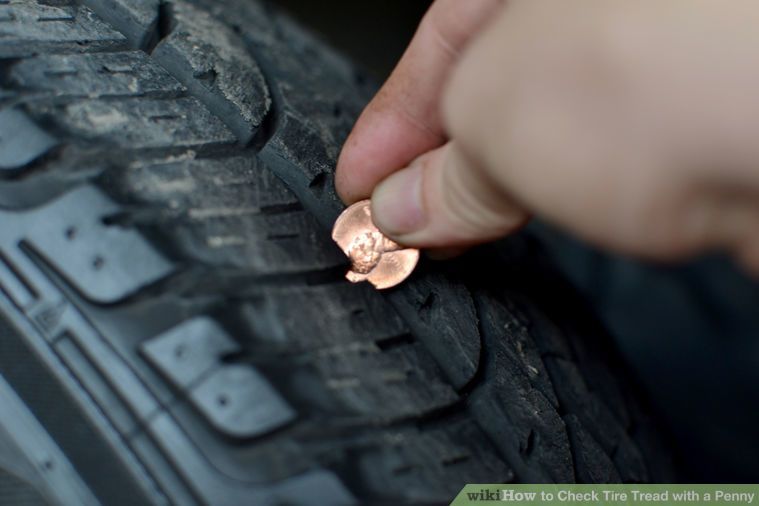 Most automobile manufacturers warn drivers to replace vehicle tires after six years. To wait any longer than that is a gamble with tire integrity and is risky for drivers.
Most automobile manufacturers warn drivers to replace vehicle tires after six years. To wait any longer than that is a gamble with tire integrity and is risky for drivers.
So what can you, as a driver, do to protect yourself? When buying new tires, ask for the newest tires available, and look at the tire’s manufacture date. The manufacture date is a Department of Transportation (DOT) code of 10 or 11 characters embossed on the inside of the tire (see Figure 1). For new tires, the code is always 11 characters. However, tires manufactured before the year 2000 have a 10-character code. Expiration dates for tires manufactured before 2000 were based on a 10-year scale because the expected life-span of a tire was 10 years. Current guidance suggests that tires should be expected to last a maximum of only six years.
Figure 1. A tire manufactured-date code, shown in the yellow box, may appear on the outside of some tires. The 11-character DOT code, shown in the red box, appears on the inside of tires.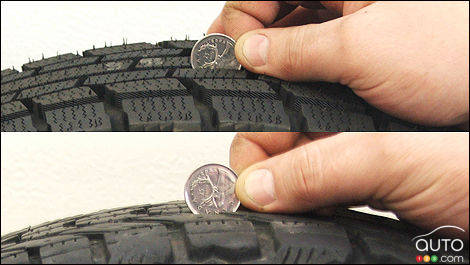
Recently, some tire manufacturers have begun to stamp partial codes on the outside of tires (facing away from the vehicle) so that checking the date does not necessitate removing the wheel. This partial code, boxed in yellow in Figure 1, is the most important piece of information about a tire. These last four digits of the DOT code represent the manufacture date of the tire. The last two digits refer to the year the tire was produced, and the first two digits identify the week number within that year. The tire shown in Figure 1 was manufactured on the 36th week of the year 2001. That tire was on a trailer that had been sitting in a field unused for 10 years, and it showed signs of dry-rot cracking. It is unclear whether trailer tires should be replaced every six years since they do not receive the same daily punishment as automobile tires. However, automobile tires should be replaced every six years.
The majority of people who take the gamble of keeping outdated tires do so to save money. Driving on outdated tires is risky not only for the driver of the car having those tires but also for other drivers. Take the initiative and change vehicle tires every six years, or sooner, to diffuse a potentially dangerous situation.
Driving on outdated tires is risky not only for the driver of the car having those tires but also for other drivers. Take the initiative and change vehicle tires every six years, or sooner, to diffuse a potentially dangerous situation.
Authored by:
Matt Deskevich, Student Assistant at Penn State University – [email protected]
Reviewed by:
Bill Harshman, Penn State University (Has since retired)
Dennis Murphy, Penn State University (Has since retired)
Aaron M. Yoder, University of Nebraska – [email protected]
Kerri Ebert, Kansas State University – [email protected]
Consumer disputes over the age of tires have not subsided for several seasons. Buyers are excited that the warranty period for tires is limited to 5-6 years according to GOST, and after the expiration of this period, the rubber becomes unusable.
Is this really the case, read this article.
Manufacturers of most brands on their products set Shelf life is 5 years and service life is also 5 years .
The shelf life of a tire is the period during which it retains its performance when properly stored.
The end of this period does not mean that the tires have become unusable . A shelf life of 5 years is given by manufacturers because, by law, they cannot set a shelf life higher than the service life. Tires over 5 years of storage cannot be called damaged or defective, their technical characteristics may be slightly reduced. American researchers argue that the period of storage of "shoes" must be at least 10 years. Experts from Germany are sure that it cannot exceed 6 years.
The expiration date of tires is the warranty period during which the manufacturer is responsible for the quality and condition of the tire if it was used for its intended purpose without violating the operating rules.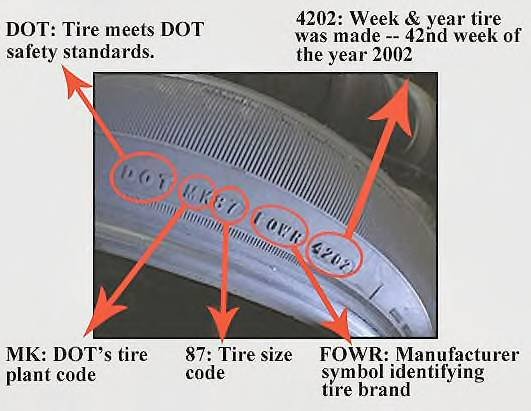
According to Russian legislation (GOST 5513, GOST 4754-97) , the service life of tires is 5 years from the date of manufacture.
How can I find out the date of manufacture of tires?
You can find out the age of tires by a special DOT code. Tires manufactured after 2000 in the DOT code contain two pairs of numbers, where the first pair indicates the week number of the year, and the second pair indicates the year. Earlier tires before 2000 have 3 numbers in their composition, where the first two digits are the week number, and the last one is the year (see the transcript in the photo).
Determination of the average shelf life of a tire according to GOST and operating conditions.
- The symbol ZR denotes tires for high-speed cars. They are recommended to be used at speeds over 240 km/h. up to 6 years
- Tires with the H symbol are used at a maximum speed of 210 km/h. within 5 years.
- The sign S symbolizes the maximum permissible speed of 180 km/h. and operational period of 4-5 years.
Most tire manufacturers do not agree that tire life is limited to 5 years. Each company has its own opinion on this matter. We analyzed several of them and the information they posted on their official websites.
Michelin
The French tire manufacturer Michelin has become famous for its active fight against the perception of the rapid aging of tires as a perishable product. Her information campaign "Tires Are Not Bananas" created a lot of noise in the automotive environment. According to the representative office, several test trials were carried out in Saudi Arabia, South Korea and Germany. As a result of testing, no difference was found between new tires and tires stored for 3 years. They were tested for various characteristics such as rolling resistance, high speed durability, etc. Tires with a year life were approximately equal in performance to 10-year unused tyres.
Tires with a year life were approximately equal in performance to 10-year unused tyres.
Michelin focuses the attention of car owners on the fact that tires are not a perishable product, their shelf life is not as important as the service life is important, starting from the date the tires are installed on the rims. It is from this moment that the tire is subjected to all tests: pressure, temperature changes, wear, contact with uneven and sharp coatings, etc.
Continental
On the Russian official website of Continental, we found the following information on the expiration dates of tires.
“When a tire is stored in the correct position and under the recommended conditions, it will not lose its original balanced performance for 5 years from the date of manufacture of the tire.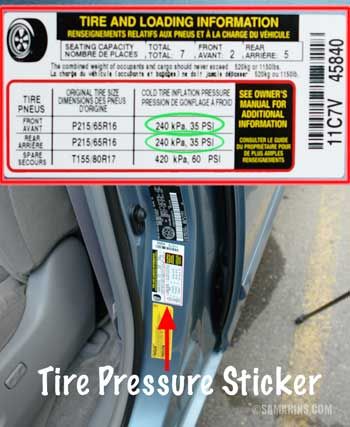
A properly maintained, unused tire less than 5 years old can be sold as a new tire and used normally.
Continental recommends replacing all tires (including spares) with a sidewall date greater than 10 years.
Nokian
The following information is posted on the Nokian official website:
“Tire life is not defined by law, but tires can only be considered “new” if they have been manufactured within the last five years. The recommended service life of tires is six years and the recommended maximum period is 10 years.
The opinion of our specialists, based on many years of experience, coincides with the opinion of manufacturers: the shelf life is 5 years + the service life is up to 10 years. Moreover, more "adult" tires, in our opinion, are of better quality.
To keep tires as long as possible, they are stored in compliance with all rules and recommendations. The main condition is a cool, ventilated, darkened room away from oils, paints, ozone, and heat sources.
Rubber products tend to lose their performance over the years. To prevent and slow down this process, manufacturers add polymers to the rubber compound. They prevent oxidative processes that occur due to the interaction of protectors with oxygen and ozone.
The following are the main conditions for the proper storage of tires in accordance with GOST 24779-81:
Maintaining a constant regime without sudden jumps, slight temperature fluctuations from -30°С to +35°С are allowed;
Provide a low humidity level of 50-80% in a dry, ventilated cool room;
Avoid direct sunlight, use darkened hangars, shield heat sources;
Keep away from sources of heat;
Tires should not come into contact with corrosive, copper materials.
Avoid kinking, loading or positioning on an uneven surface.
Avoid contact with oils, organic solvents, acids, alkalis, fuels and lubricants on the tire surface. It is forbidden to lay tires on a wet and dirty surface.
It is forbidden to lay tires on a wet and dirty surface.
In the warm season, when storing tires outside, they should be covered with light-tight material and raised above ground level to ensure ventilation and prevent the occurrence of the greenhouse effect.
Storage on reflective, light and heat absorbing surfaces is prohibited.
Keep away from chemicals, oils, paints, open flames, electric motors that produce ozone.
Used tires must be washed and dried.
Tires without rims should be stored upright.
The service life depends on many factors: the load on the car, the quality of the roads, the driving style, the distance traveled, tire damage, etc. To increase their service life, follow these rules:
Check tire pressure every 2-3 weeks. With reduced pressure, tire wear increases by the equivalent of a % reduction.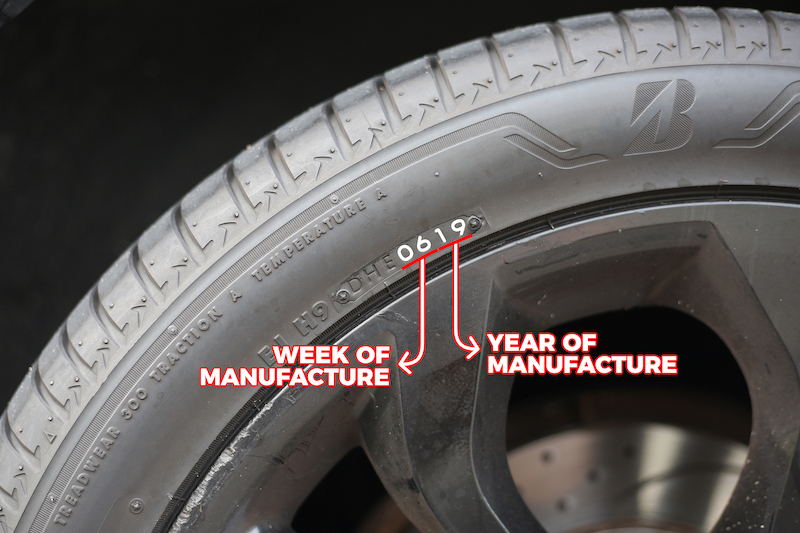 For example, a 15% reduction in pressure can result in a 15% reduction in service life. Inflated tires are less scary.
For example, a 15% reduction in pressure can result in a 15% reduction in service life. Inflated tires are less scary.
The wear of the front tires is always significantly higher than the rear ones, so it is recommended to swap them after some time, carefully watching the direction of the tread pattern and the direction of rotation.
Proper alignment of tires in relation to rims. If the direction is not the same, then performance is significantly reduced.
To prevent damage to the sidewalls of tires, avoid close proximity to curbs and high ledges.
Wash off dirt from the surface of the rubber and from deep grooves with special cleaning agents.
Adhere to an even driving style without harsh brakes and quick starts.
Do not overload the car beyond the norm. 20% excess weight leads to a 30% loss of tire life.
Keep the wheels balanced and check the alignment angles annually.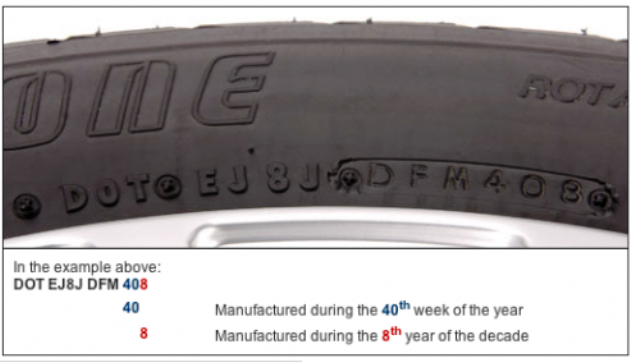
The main condition for a long tire life is:
- high quality products,
- careful operation,
- proper storage of tires in the off-season,
- timely diagnosis.
The age of tires in standard storage is a minor non-determining factor that should not be taken into account when buying them.
Previous article Next article
Car tires - elastic shell mounted on a disc rim. It is the tires that dampen the small vibrations that occur due to imperfect roads and compensate for the inconsistency in the trajectories of the wheels. The characteristics of tires affect: driving comfort, maneuverability and vehicle stability. However, even the highest quality rubber eventually deteriorates. Therefore, every driver should know how to correctly determine the degree of tire wear in order to replace them in time.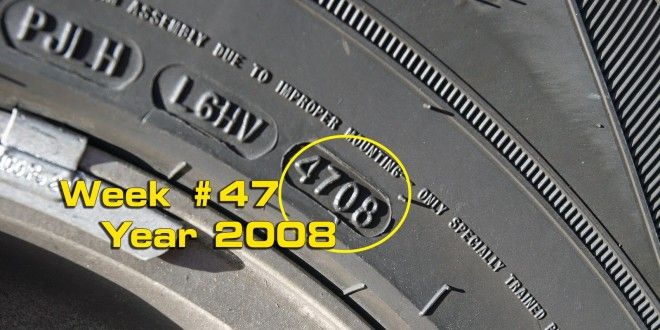 Car and truck tires have different periods of use, depending on both the initial characteristics of the products and the operating conditions.
Car and truck tires have different periods of use, depending on both the initial characteristics of the products and the operating conditions.
Tires wear out not only due to operating loads. They are characterized by natural aging, since the rubber compound from which the tires are made gradually loses its elasticity and resilience. The use of such rubber leads to a deterioration in vehicle controllability and creates dangerous conditions due to the high probability of tire rupture on the way.
In accordance with GOSTs 4754-97 and 5513-97, the warranty period for car tires is 5 years. Foreign manufacturers claim that the working life of tires is 5-10 years. There are no legislative acts obliging drivers to change tires after this period, but in order to create safe driving conditions, the driver must take into account the recommendations of GOST. Manufacturers usually set their own warranty periods.
Michelin, Bridgestone, Nokian, Continental, Dunlop, Pirelli, Yokohama:
| Brand | Warranty period declared by the manufacturer |
| Bridgestone | Tire dependent - 3-6 years |
| Nokian
| 5 years |
| Continental | 10 years old |
| Dunlop | Tire dependent |
| Pirelli | Tire dependent |
| Yokohama | 5 years |
| Michelin | 10 years old |
During the warranty period, the responsibility for identified significant defects rests with the manufacturer. The owner of the vehicle will be forced to eliminate defects on his own if there have been:
The owner of the vehicle will be forced to eliminate defects on his own if there have been:
If the vehicle is used intensively, it may be necessary to replace the tires before the end of the warranty period. Therefore, regulatory documents establish the mileage after which you should think about replacing tires.
Therefore, regulatory documents establish the mileage after which you should think about replacing tires.
The maximum standard mileage is:
The actual rate of tire wear may differ from the standard values due to a whole list of factors, such as:
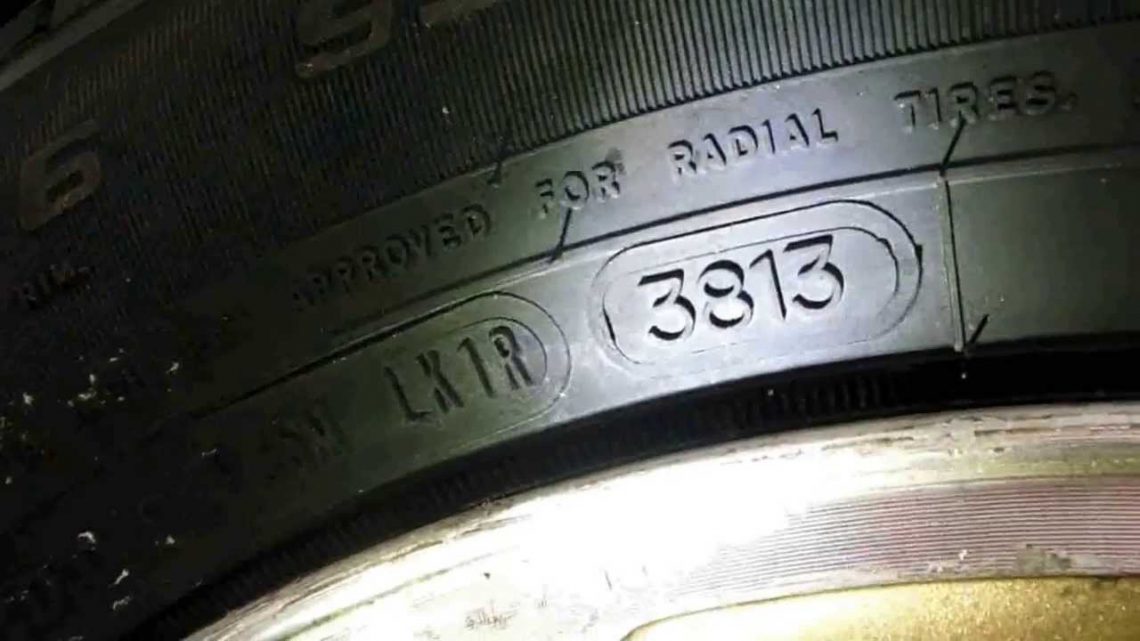 Low-quality products under the influence of abrasive particles wear out very quickly.
Low-quality products under the influence of abrasive particles wear out very quickly. You can determine the need for tire replacement yourself by the following signs:
Table of minimum allowable tread depth for different modes of transport as amended on 01/01/2015
| Minimum allowable remaining tread depth | Type of transport |
| 0.8 mm | L - motorcycles, mopeds, quad bikes |
| 1. | N2, N3, O3, O4 - trucks with a maximum permissible mass of more than 3.5 tons and trailers with a maximum permissible mass of more than 3.5 tons |
| 1.6 mm | M1, N1, O1, O2 - cars, trucks and trailers with a maximum authorized mass of less than 3.5 tons |
| 2.0 mm | M2, M3 - buses |
| 4.0 mm | Winter tires marked M+S, M&S, M S, the amount of residual tread depth does not depend on whether tires are installed on cars or trucks |
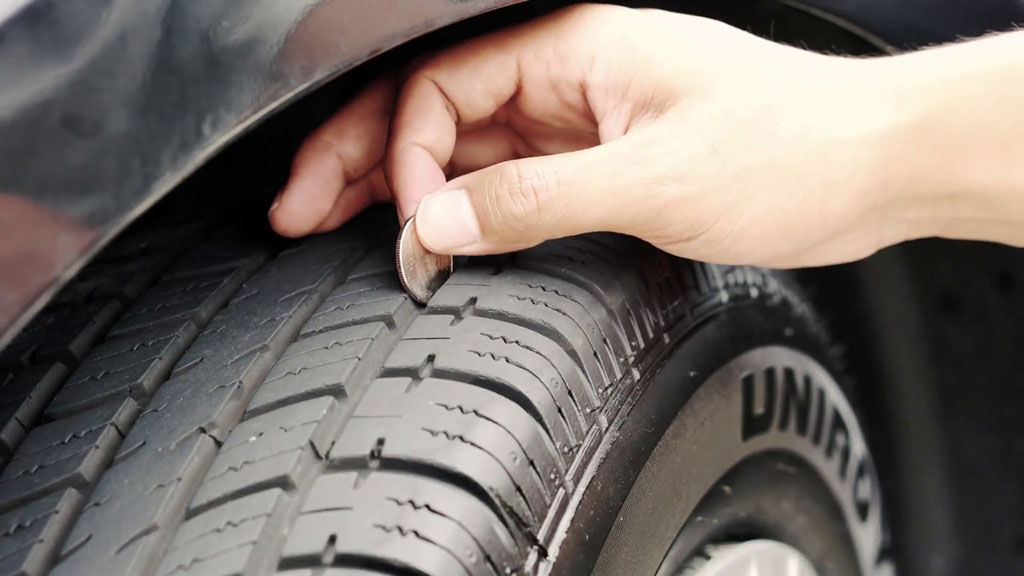 If it does not exceed 50% of the original value, then the tires must be replaced.
If it does not exceed 50% of the original value, then the tires must be replaced. Important! If the outer edges of the tire wear faster, the inflation pressure is too low. Accelerated wear of the central part indicates excessive pressure. Wear on one side indicates a violation of the toe angle. Uneven surface wear is evidence of aggressive driving with rapid acceleration and hard braking.
You can extend the life of your tires by doing the following:
Normative document regulating the terms and conditions of tire storage - GOST 24779-81.